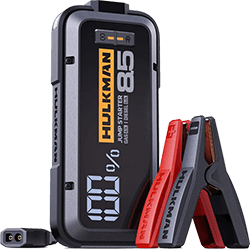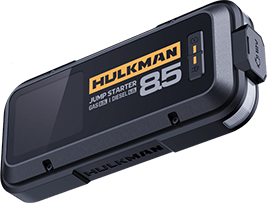Recent Articles
-
Mapping America’s Solar Landscape: Regional and Seasonal Variations November 11, 2025
-
Why Solva Solar Panels Stand Out: From Consumer’s Comment November 06, 2025
-
Unleashing Solar Power: Tips for Using and Maintaining Portable Solar Panels November 03, 2025
Featured Products
note
What’s Inside a “Mega”? A Reader-Friendly Exploration of the Hulkman Mega Power Station
Imagine a tough, sealed box that quietly powers your laptop, camera, lights—even a small heater—whether you’re camping, in a van, or facing a blackout. Under that rugged exterior lies a hidden “microsystem” with energy storage, power conversion, and thermal safety working together. In this article, I’ll guide you through its three major modules—battery & management, power conversion & outputs, structure, cooling & safety—using simple analogies so non-tech readers can follow along. Along the way, I’ll highlight how the Hulkman Mega integrates its design to deliver real advantages over basic power banks or camping generators.
In this article, we’ll cover:
- Battery & Management — The Warehouse and its Watchdog
- Power Conversion & Output — The Shuttle and Distribution Hub
- Structure, Cooling & Safety — The Skin, Ventilation, and Safety Net
- Why the Inside Matters — A Few Questions to Ponder
- Conclusion
Battery & Management — The Warehouse and its Watchdog
Think of the battery pack as a warehouse where electrical energy is stored, and the BMS (Battery Management System) as the watchdog overseeing it.
The Energy Warehouse (Battery)
In the Mega, the battery uses NCM (Nickel-Cobalt-Manganese) lithium cells. This chemistry is widely used because it offers a good balance: relatively high energy per weight, decent charge/discharge performance, and tolerable temperature behavior. VDE’s battery fact sheet notes that today’s lithium-ion cells (including NCM types) are designed to operate from about –20 °C to +60 °C, combining high energy density and fast charging features. (vde.com)
You can picture each cell as a bucket holding electricity. The more buckets (or bigger buckets) and the better their material, the more energy you can store.
The Watchdog (BMS)
A large warehouse without supervision can be dangerous—goods might overflow, spoil, or be stolen. The BMS plays the role of the trustworthy overseer. According to Wikipedia:
A battery management system monitors parameters like voltage, temperature, current, and balances among cells to ensure safe and long life. (Wikipedia)
In simpler terms:
- It checks each cell’s “fill level” (voltage) and temperature.
- Prevents overcharging and overdischarging.
- Balances energy among cells so one cell doesn’t get overworked.
- Cuts off power if something dangerous occurs.
In advanced systems, algorithms can also predict battery health over time or adjust charging patterns adaptively. A review in MDPI discusses how modern BMSs use smarter algorithms to manage safety and performance. (MDPI)
In the Hulkman Mega, this BMS likely consists of voltage sensors, temperature sensors, protective switches (often MOSFETs), and a control chip. Together, they guard battery longevity and safe operation even in tricky conditions.
Power Conversion & Output — The Shuttle and Distribution Hub
Once energy is in the warehouse, it needs to get from there to your devices—sometimes in different “forms.” That’s the job of the power conversion and output module.
DC → AC Conversion (Inverter)
Batteries store direct current (DC), but many devices—like laptops, small appliances—use alternating current (AC). An inverter is like a shuttle: it takes DC and “reshapes” it into AC. Inside, it uses switching elements (MOSFETs or transistors) and timing logic to build a clean waveform, ideally a pure sine wave. That clean wave is gentler on sensitive electronics.
Mega is claimed to use pure sine wave output—meaning the “rewoven” energy is close to what you get from a home outlet, reducing flicker or interference.
UPS Switching (Uninterruptible Power Supply)
Imagine you are watching a movie and someone cuts the power. A UPS acts like a backup line that takes over so your devices don’t blink or reset. The Mega claims it can switch from external power to battery in ≤ 15 milliseconds, which is fast enough to protect cameras, drones, or computers from interruption.
Multi-port Output & Input
Mega offers many output options:
- AC outlets: 3 × 120 V sockets, rated for 600 W continuous, burst mode up to 1200 W
- USB-C / USB-A ports: for charging phones, cameras, etc.
- DC output(s): for car devices or direct-voltage tools
On the input side, it supports:
- AC charging (from wall)
- Vehicle DC charging
- Solar input (12–58 V, up to 400 W)
This is like having many doors in and out of your warehouse, and a smart traffic controller inside to manage flow so nothing overloads. The internal control boards have the task of orchestrating which output to feed, obeying safety limits, and preventing conflicts.
Structure, Cooling & Safety — The Skin, Ventilation, and Safety Net
Even a well-designed energy system must survive real life—heat, bumps, dust, and misuse. That’s where structure, heat management, and protection circuits come in.
Protective Shell & Frame
The exterior of the Hulkman Mega reportedly uses 94V-0 flame-retardant materials—plastics or composites that resist catching fire. It also includes dust covers, shock-absorbing support, and anti-slip bases to survive rough terrain or movement. Ports are often reinforced or isolated to reduce the risk of loose connections (for example, the Mega mentions using a dedicated ST-25 solar/vehicle connector).
This shell is like armor protecting the delicate machinery inside from dust, moisture, impact, and electrical hazards.
Cooling & Heat Management
Every electronic circuit, especially power converters and switching components, generates heat. If that heat doesn’t escape, it shortens lifespan or causes failure.
To manage this, Mega includes a dual-fan cooling system to continuously expel hot air. Inside, they likely use heat sinks, thermal pads, and guided airflow to pull heat away from hot parts. Think of it as installing mini air conditioners inside each power board.
Temperature sensors feed information back to the control system. If a component becomes dangerously hot, the system can throttle down power or shut off parts temporarily to protect itself.
Safety Circuits & Certification
Finally, in the inner wiring lie safety circuits—the “insurance policies.” These include:
- Automatic cutoff switches (to break circuits if current is too high)
- Alarm systems (LEDs, buzzers) to warn of faults
- Surge protection, isolation, and insulation to protect users and equipment
- Compliance with safety standards and certifications
These layers of protection ensure the system is resilient in real-world use.
Why the Inside Matters — A Few Questions to Ponder
After walking you through the three layers—battery + BMS, conversion + output, structure + cooling—you see how each part depends on the others. A weak cooling design might sabotage a powerful battery, no matter how well the BMS is built.
Here are some questions to deepen your thinking:
In freezing or high-altitude settings, which subsystem is likeliest to fail first: the battery’s chemistry, the switching elements in converters, or the cooling / temperature control?
If you wanted to push the Mega further (higher wattage or longer runtime), would adding more battery capacity or improving conversion/thermal efficiency give more reward per cost?
Compared to other portable power station brands (like EcoFlow, Jackery, Bluetti), where do you think the Mega gains advantage—cold tolerance, fast UPS switching, multiple input compatibility—and in which areas might it be limited (weight, price, complexity)?
As one Reddit user put it when contrasting portable stations to DIY battery systems:“Power stations … typically come with a variety of wall outlets, USB ports, and 12 V outlet to suit your needs … Ease of installation and setup.” (Reddit)
Conclusion
Battery + BMS forms the energy warehouse and watchdog, storing power safely, balancing cell health, and protecting against failure.
Power conversion + output is the shuttle and distribution hub, delivering usable power (AC, USB, DC) while switching reliably in emergencies.
Structure + cooling + protection are the shell, ventilation system, and safety net that keep everything alive under real conditions.
In the Mega’s design, these modules are integrated with strengths: support for subzero operation, ≤15 ms UPS switching, flexible input/output options, dual-fan cooling, and strong protective design. These traits give it competitive advantages in the field.
Learn more and use exclusive code “TNZG4NC7” to get a hidden Mega discount at checkout.






















